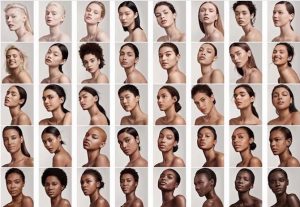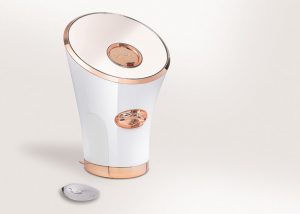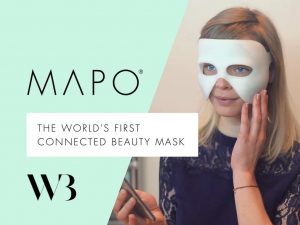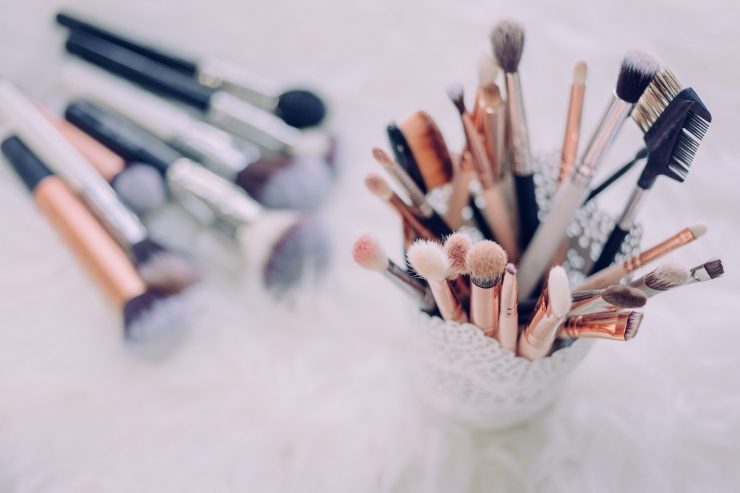Big sensation in the beauty and business worlds: TIME magazine named Rihanna’s Fenty Beauty brand one of the 25 best inventions of 2017, two months only after its launch.
Reason enough for major brands to launch more inclusive ad campaigns. Why was it all that? The brand offered foundations for all skin tones. Criticized for its lack of representation, the (mainstream) beauty industry also had a product-range width problem. Traditionnally offered shades range from very light to medium, providing a way more diverse offer for lighter tones. No surprise then that Fenty’s darker shades rapidly sold out in American Sephoras.

Power to the consumer
Thanks to social media and the massive arrival of disruptive brands on the market, the beauty industry has been turning to its consumers more and more. It’s not only a matter of selling products anymore, but also including consumers in the definition of global objectives, strategies, designing products… Consumer communities are a strategic place to compare, test, recommend. Although they used to be quite disconnected from brands, corporate pages on social media can now shape these communities through a new form of interactions, and even more so on a market where peer-review and girlfriends’ recommendations are very important. Consumers did not wait for big brands to get involve to organize their communities in order to find products and services that would fit them best. In France, “Ma coiffeuse Afro” app, an app that allows ladies to find the best suited hairstylist for their afro hair recently reached over 40 000 users.
Several US brands made a big impression with their dazzling success and online attitude. One of the leaders of the movement, ColourPopcultivates its unique and “authentic” brand on Twitter, where it asked its followers “If ColourPop had a concealer, what would it be called? And go!”.
In an interview with Business of Fashion, the minds behind these disruptive brands sing the same tune : engaging with your customers is key. MilkStudio, another pioneer, built its first ad campaign around the idea that it “wasn’t about makeup, but about the people who wear it and what they do in their lives.”
These trends have the same bottom line: consumers now want products that are true to them, respect them, and don’t lie. Sharing the same bottom line is Beauty Tech, which is now still focused around objects and processes that aim at a better knowledge of each user’s skin, and offering more and more personalized products.
Beauty Tech, connected objects for custom needs
An idol of salon crowds and the internet, Romy Paris has been turning heads with “Figure”, a machine known as the “Nespresso of beauty”. Connected to a mobile app that “understands your environment and listens to your skin’s needs”, the machine elaborates treatments that are 100% tailored not only to your skin, but also to the variations it experiences every day.

These are the days of the IoT: more and more new sensors aim at capturing what your skin experiences every day as thoroughly as possible, in order to provide the best fitted solutions. Our Look Forward incubated startup Wired Beauty for instance proposes a mask called Mapo® which can analyze your skin with its digital micro-captors, upon allowing better skin penetration of your usual care products. The sense of community is preserved, as you can use the La Clinique Digitale® app to discuss your needs with others.

L’Oréal has also invested in Beauty Tech, as well as Research & Development programs. According to Reuters, the company invested over 25% of its media expenses to digital-related subjects, as well as dedicating over 1000 employees in the field. Its brand Laroche-Posay for instance sells a wearable UV Patch that tracks sun-related behaviors, in offer to offer a better protection.
A use of tech focused on self-care and health
For now, Beauty Tech is mostly developing around connected objects, wearables especially. It is still focused on a “hygienic beauty”, with a strong emphasis on dermatology, placing it at a crossroads with healthcare.
In this respect, the consumers’ craving for authenticity cannot be addressed without looking into more transparent production processes, and simpler product formulas. Clients want to know exactly what they’re applying on their skin. But in order to know what’s “just right”, precise knowledge of one’s skin is necessary! Hence the development of technologies that allow thorough and very fine skin analysis, such as dermatological scanners like Neutrogena’s SkinScanner.
Look Forward’s perspectives
We are now waiting for a crossover between the two trends: deeper customization of care through tech and stronger efforts from brands, both from a communication and a strategic standpoint, to better match the needs of all their clients.
Custom-made make-up is around the corner: Lancôme has already launched a custom-made made foundation called “Le Teint Particulier”, available in France only at the Paris Galeries Lafayette.
As customization becomes wider-spread in mainstream beauty culture and products, one can hope for better representation and a more inclusive industry.
